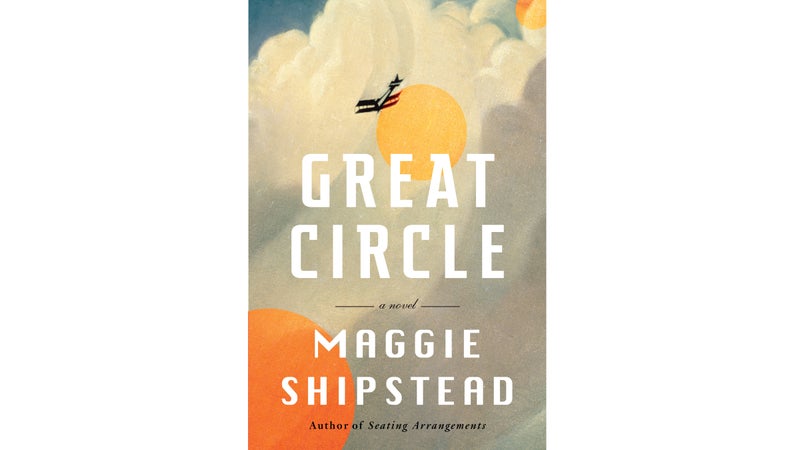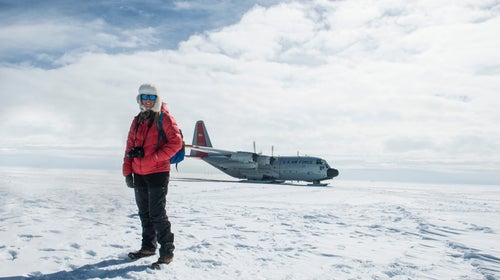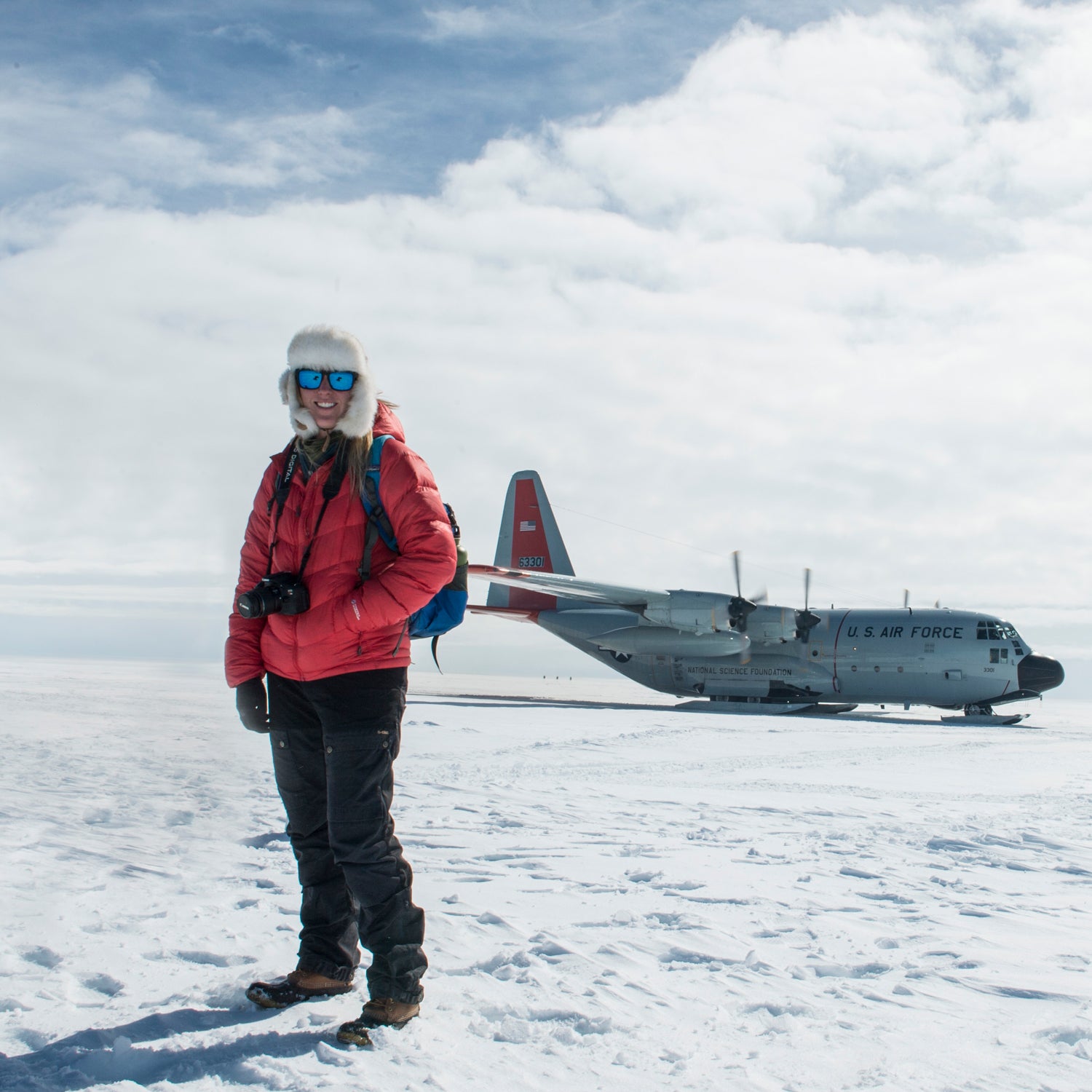Often��when we talk about a big, ambitious book, we reach for the language of geography. We describe the terrain it covers; we say that it sprawls, or ranges widely. The book is framed as a kind of passage through the world: we might talk about a protagonist’s journey, or an author’s exploration of a topic.
In award-winning author Maggie Shipstead’s new novel, all of those analogies are made literal.��
’s 600 pages span a full century and the entire planet. The book tells the story of Marian Graves, a fictional female pilot who disappeared in 1950 while attempting an unprecedented north-south circumnavigation of the earth. She had only one leg left in her trip, a final leap from Antarctica to New Zealand, when she vanished, Earhart-style, in the South Pacific. Shipstead takes readers through the events of Marian’s life leading up to that moment, from her parents’ doomed marriage and her unorthodox childhood, roaming semi-feral with her twin brother in the Montana woods, to the complex web of desires, ambitions, and romantic entanglements that prompt her to her��final flight.��
Braided with Marian’s story is a contemporary narrative. Hadley Baxter, a troubled young Hollywood starlet, attempts to rebound from scandal by playing Marian in an Oscar-bait biopic. But Marian and Hadley have more in common than a casting decision: Hadley’s own parents crashed into Lake Superior in a small plane when she was a toddler, and��like Marian, she was raised, to the extent that she was raised at all, by a dissolute uncle. Her parents’ fate matches what’s known of her character’s final act, and while Marian yearns for the sky, the specter of what she calls the “sharp gannet plunge” of lives being extinguished in cold, dark water looms throughout both timelines.
Great Circle is a big novel but not a daunting one: an impressive array of historical research is integrated seamlessly, and the story is propulsive. The characters are compelling, and their choices, even the extraordinary ones, make sense within their worlds. Shipstead’s sentences are luminous, her metaphors precise: a luxury steamship crossing the North Atlantic at night is “a jeweled brooch on black satin”; in the present day, Hadley looks down from a hillside mansion at “the big flat circuit board of Los Angeles planing off into the pale haze.” Anyone who’s felt a little plane rattle up off a rough dirt runway will recognize their experience in Marian’s; anyone who hasn’t will get a taste of the sensation.

Those details were earned through deep research, trips to the archives, and Shipstead’s own experiences. She grew up in Orange County, California, and is now based in Los Angeles, where many of her friends work, in one way or another, in the film industry. She has written two previous and��very well-regarded novels: , an award-winning New York Times bestseller, and . She was traveling between her first and second release, figuring out what to work on next, when she got the idea for Great Circle.��
Shipstead was in Auckland, New Zealand, and spotted a statue of , the first pilot to fly solo from England to New Zealand, outside the city’s main airport terminal. Batten was one of a cohort of female pilots who were enormously famous in the early, daring years of aviation��but who have since largely slipped from mainstream public memory. The exception, Amelia Earhart, is known more for her disappearance than her accomplishments. The rich history of female aviation, and how little of it we choose to remember, got Shipstead chewing on narrative ideas that involve disappearance and death. “It’s so often the same thing,” she says, “but as a society we process it really differently.”
Shipstead let the idea linger for a couple of years before really sitting down to write in the fall of 2014. Around that time, she also began to get assignments to write travel stories (including ���ϳԹ���), and a fruitful cross-fertilization began. Over several years, her reporting took her to the far-flung islands of the Pacific—Hawaii, the Cook Islands, sub-Antarctic New Zealand—and around the circumpolar region, from Greenland and Alaska to Svalbard, in Arctic Norway, and the Canadian high Arctic. The map of Marian’s journey began to take shape.��
The trickiest and most critical place to reach was Antarctica. The southern continent was crucial to the story of Marian’s disappearance, and Shipstead says she didn’t think she could imagine her way through��it. Landing on the Greenland ice sheet in a C-130 for a travel story would give her some sense of the flat, frozen immensity at the poles, but she wanted more. The gap in her research was resolved unexpectedly: on an assignment to the sub-Antarctic, she met an expedition leader who worked in the region and they hit it off. He invited her along on a cruise, and so, she says, “our first date, really, was a five-week-long sea voyage to Antarctic. That was a really strange way of getting that wish granted.”
The rich history of female aviation, and how little of it we choose to remember, got Shipstead chewing on narrative ideas that involve disappearance and death.
There were other lucky breaks. During a visit to an aviation museum in Missoula, Montana, Marian’s hometown, Shipstead was hanging around, sitting in the cockpit of a vintage airplane on display, when she was invited along by a couple of pilots who were taking a 1927 Travel Air 6000 up for a spin. “That became the plane that Marian learned to fly, because I’d been in it, I’d been in the actual aircraft, in the exact right place,” she says. “That was really serendipitous and incredibly useful.”
Shipstead’s travels were supplemented by wide-ranging research into the times and places that Marian and her brother, Jamie,��pass through. The early history of aviation is woven into the fabric of the novel, but so is the story of Prohibition-era Montana, of bootleggers and cross-border flights to Canada. When World War II breaks out in Europe in 1939, the novel absorbs and makes use of several little-known pockets of history: the “combat artists” who painted and drew the front lines for the United States military; the crew of female pilots in England who flew warplanes around from base to base before their next missions across the channel; the bloody battles in remote corners of the world, like the Aleutian Islands. “Once I came across it, in it went,” she says.
Shipstead’s brother, a former pilot and Air Force veteran who, like Marian, had grown up intoxicated by airplanes, helped with the technical details, like what models of planes Marian might have flown��and how far she could have gone on a tank of fuel. Shipstead wanted Marian’s circumnavigation plan to have been just barely within the realm of feasibility at the time she made the attempt—nearly impossible��but not completely out of reach. That largely determined the timing of the flight in the novel, which matched up with a real-life Antarctic expedition that could have offered Marian a refuelling station, and with the existence of several new postwar runways in the South Pacific. Shipstead knows she may not satisfy every detail-loving aviation buff out there, but, she says, “I tried to keep it all tethered to reality as much as possible.”
I’ve spent a lot of time in Cessnas and Twin Otters, taking off from or landing on ice and ocean and earth, so I felt very at home in Marian’s world. At first, Hadley’s share of Great Circle felt like an interruption to me. But as the novel unspooled, I appreciated her perspective more and more. A lifetime after Marian’s disappearance, the filmmakers try to reconstruct her, but to a reader, it’s clear that the gap between her life and their story is a yawning crevasse. The contemporary timeline shows us how much is lost when a person dies or disappears and��how much becomes unknowable, no matter how much historical research we might dig up.��


